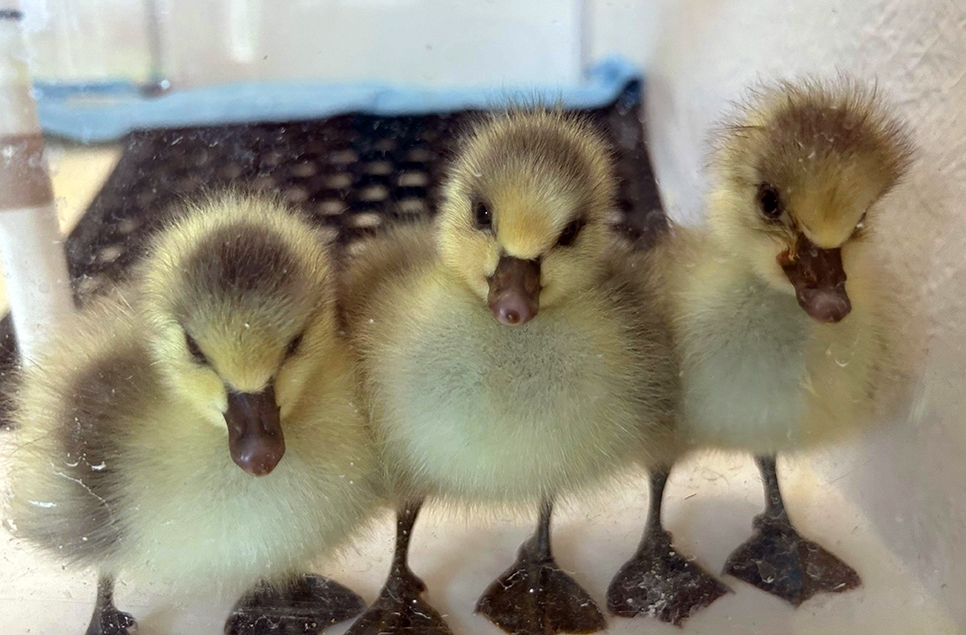First bar-headed goslings for 10 years hatch at WWT Washington

Three beautiful bar-headed goslings have hatched at Washington Wetland Centre - the first for more than a decade!
Arriving earlier this week, the youngsters are being looked after by our living collection team at our specialist duckery, where they're now on show in the indoor nursery.
The adult birds – with their distinctive black-and-white head stripes and sunny yellow beaks – can be found in the Hunter’s Creek exhibit, just up the path from our Asian short-clawed otters, with the comb ducks and coscoroba swans.
In the wild, bar-headed geese fly at altitudes of more than 14,000ft on their spring migration over the Himalayas. But did you also know...
- The bar-headed goose (Anser indicus) winters in South Asia and breeds in Central Asia in colonies of thousands near mountain lakes, laying three to eight eggs at a time in a ground nest.
- It is known for reaching extreme altitudes during migration. Every spring, large flocks fly from India through the Himalayan range, above Mount Everest, on the way to their nesting grounds in Tibet.
- The geese reach heights of up to 14,000ft, with winds that blow at speeds of more than 200mph and temperatures low enough to freeze exposed flesh instantly.
- At this altitude, oxygen levels drop by one-third, but bar-headed geese have a special type of haemoglobin that absorbs oxygen quicker than other bird species. They also extract more oxygen from each breath than other birds.
- They fly at more than 50mph and this powerful and constant flight generates body heat, which is retained by their down feathers. This stops ice from building up on their wings.
- Scientists believe that with more data about the bar-headed geese's resistance to extreme temperatures, they could help humans better cope with altitude and respiratory diseases.
- Bar-headed geese are believed to be the model for the hamsa, an image used in Indian and Southeast Asian culture as a spiritual symbol and decorative element.
Be sure to pay them a visit next time you're at Washington Wetland Centre. These and many other collection birds are available to see all year round! Don't forget to share any photos you take with us on social media @wwtwashington!
Ready to visit?
If you've been inspired to explore Washington Wetland Centre this season, find out more and plan your visit online.
Plan your visit


